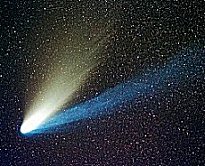Monday, December 17, 2012
Friday, December 14, 2012
Vocabulary
Solar System - Sistem Suria galaxy - galaksi
contituents - ahli-ahli Milky Way - Bima Sakti
planet - planet universe - alam semesta
planet - planet universe - alam semesta
Mercury - Utarid space - angkasa lepas
Venus - Zuhrah satellite - satelit
Earth - Bumi astronaut - angkasawan
Mars - Marikh star - bintang
Jupiter - Musytari Elliptical galaxy - galaksi berbentuk bujur
Saturn - Zuhal Spiral galaxy - galaksi berpilin
Uranus - Uranus Irregular galaxy - galaksi tidak teratur
Neptune - Neptun atmosphere - atmosfera
Moon - Bulan million - juta
comet - komet billion - bilion
meteor - meteor
meteorite - meteorit
meteorite - meteorit
asteroid - asteroid
orbit - orbit
ellipse - elips
Saturday, December 8, 2012
Solar System: Related Topic - The Big Bang
How was the Universe made?
 |
| Planets |
 |
| Galaxy |
 |
| Stars |
Solar System : Related Topic - The Universe
Related Topic – The Universe
The
Universe is made up of billions of galaxies. In the Universe, there are
2,000,000,000,000,0000,000 stars. These stars made up galaxies. Each galaxy has
a billion of stars. The Universe is incredibly huge. It would take a modern jet
fighter more than a million years to reach the nearest star to the sun.
Travelling at the speed of light (300,000km per second), it would take 100,000
years to cross our Milky Way galaxy alone.
No one knows the exact size of the Universe, because we cannot see the edge. All we do know is that the visible Universe is at least 93 billion light years across (A light year is the distance light travels in one year – about 9 trillion km).
Wednesday, December 5, 2012
Solar System: Related topic - Galaxy
Solar System: Related topic - Galaxy: The Galaxy The Universe is estimated to contain 200 billion galaxies. There are various kinds of galaxie...
Monday, December 3, 2012
Comet - Another member of Solar System
Comet - Another member of Solar System.
What is a comet?
Comets are basically dusty snowballs which orbit the sun.
They are made of ices, such as water, carbon dioxide, ammonia and methane,
mixed with dust. These materials came from the time when the solar system was
formed. Comets have an icy center (nucleus) surrounded by a large cloud of gas
and dust (called the coma). The coma is created as the ice in the nucleus is
warmed by the sun and vaporizes. Comets can develop 2 tails as they travel
closer to the sun, a straight gas tail and a curved dust tail. The gas tail is
created by the solar wind, whose magnetic fields pull the gas away from the
comet's coma. The dust in the coma is not affected by magnetic fields but is
vaporized by the sun's heat, and forms a curved tail which follows the comet's
orbit.
Subscribe to:
Posts (Atom)









